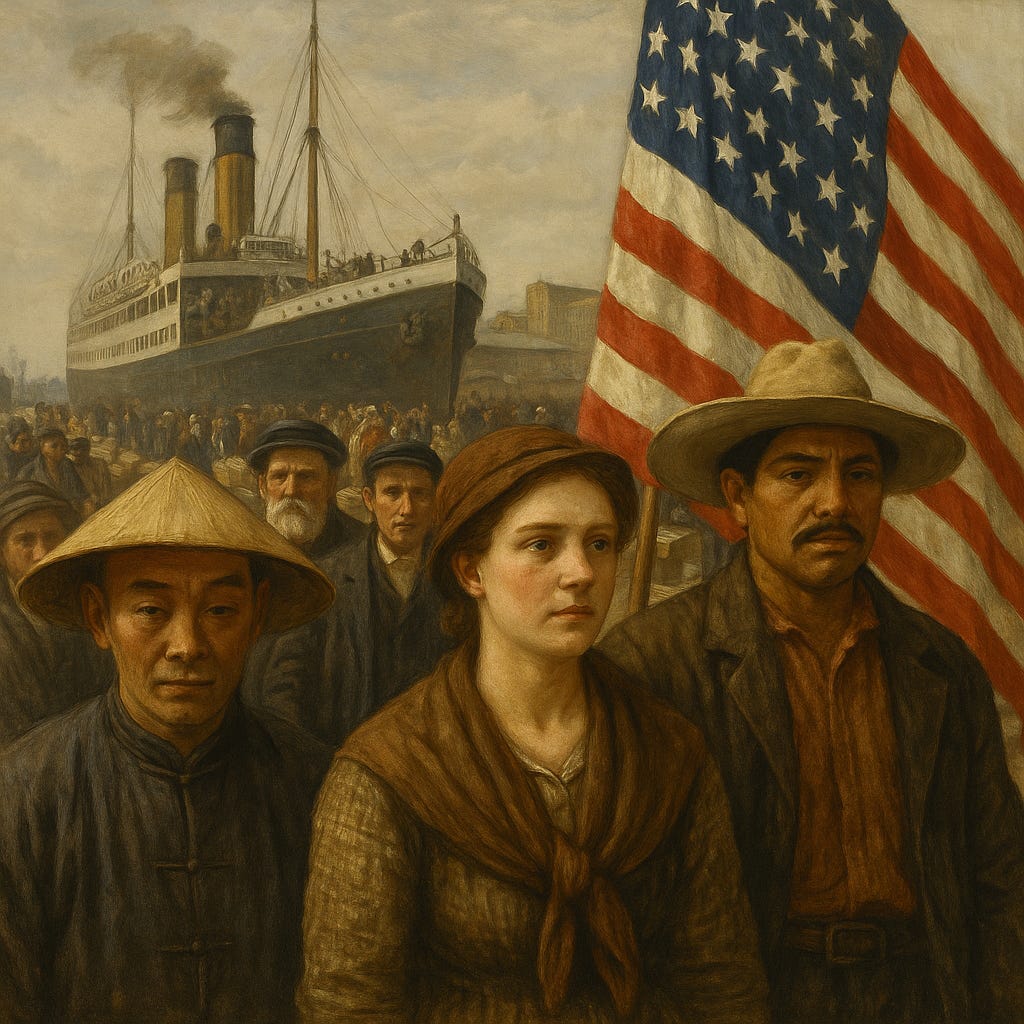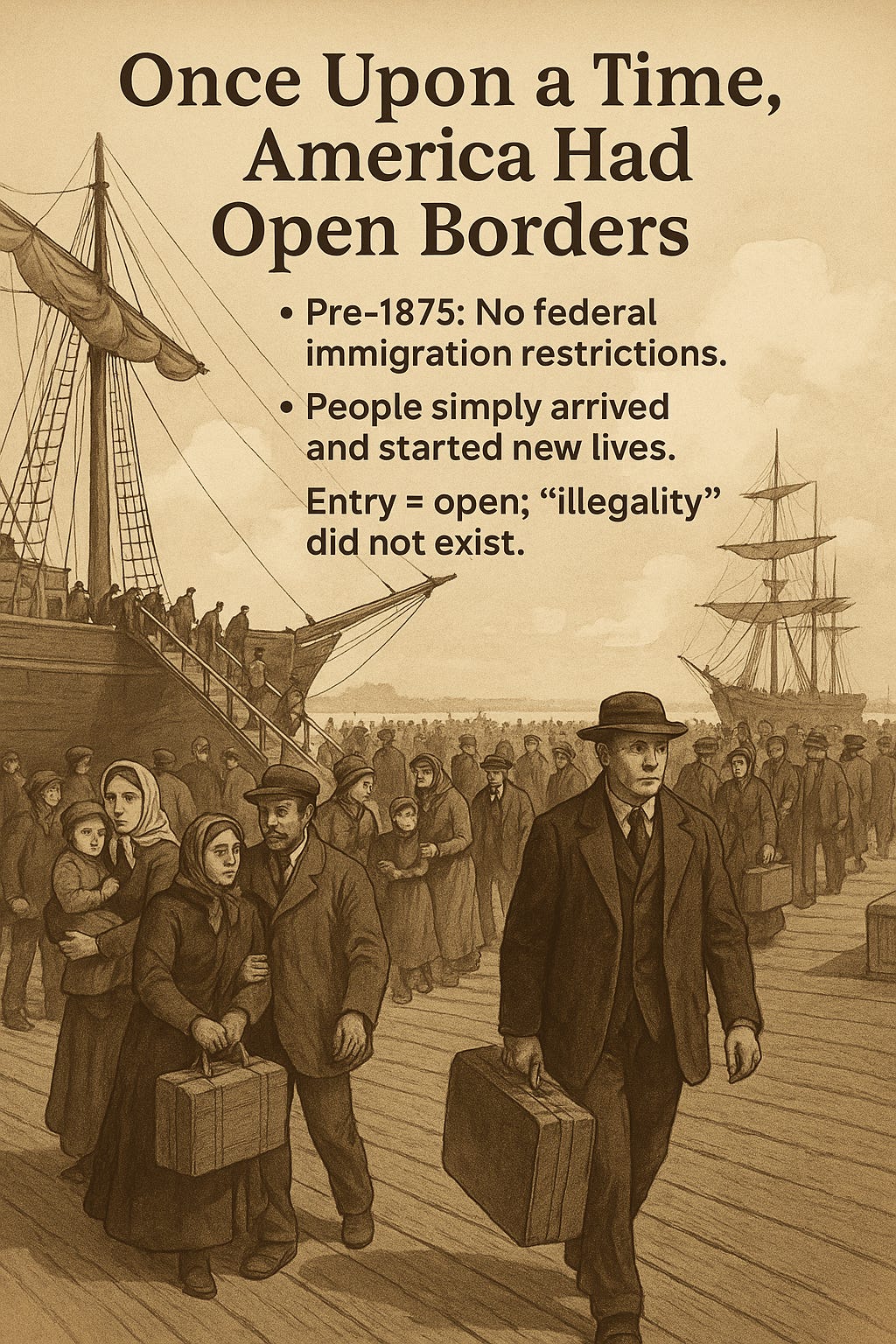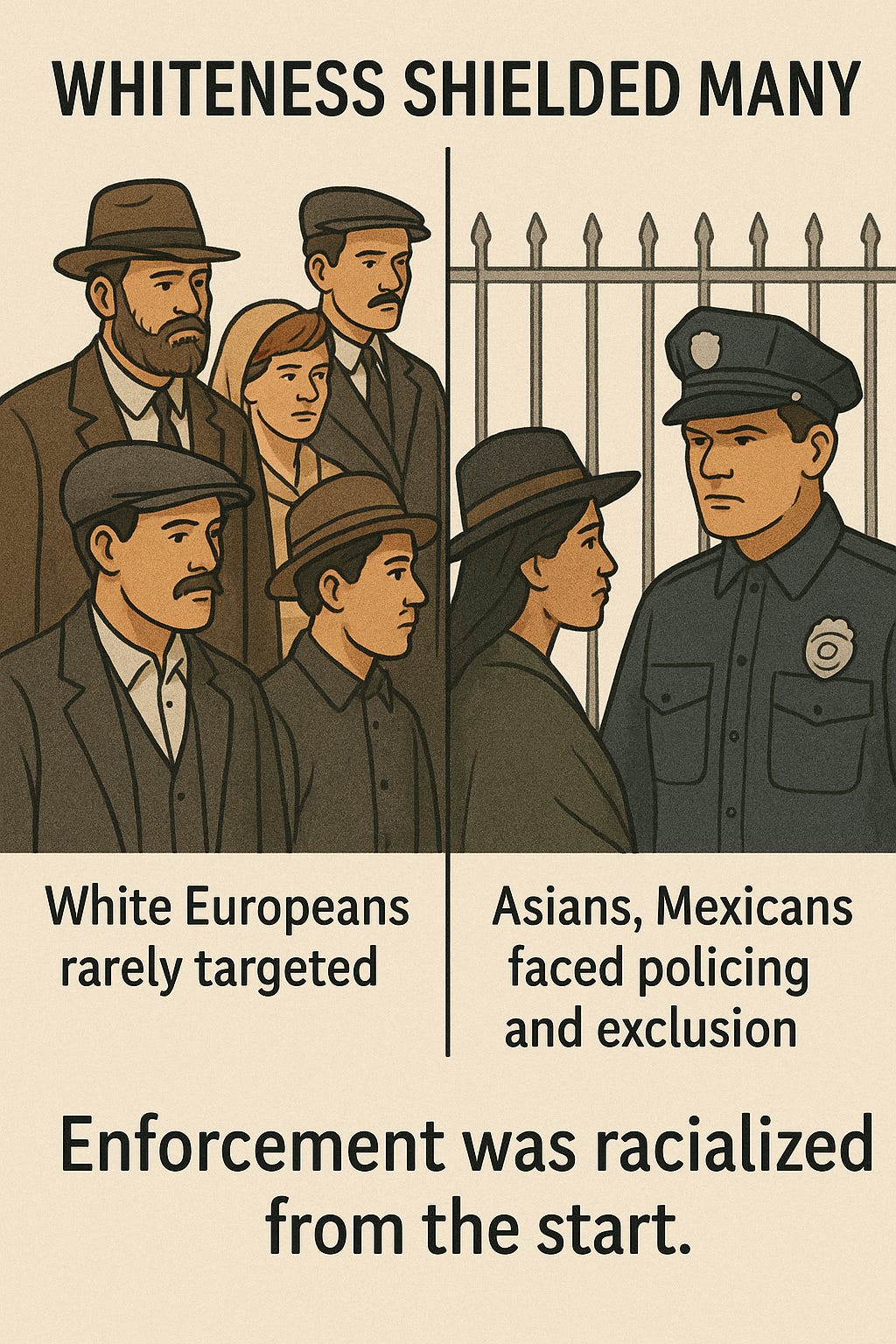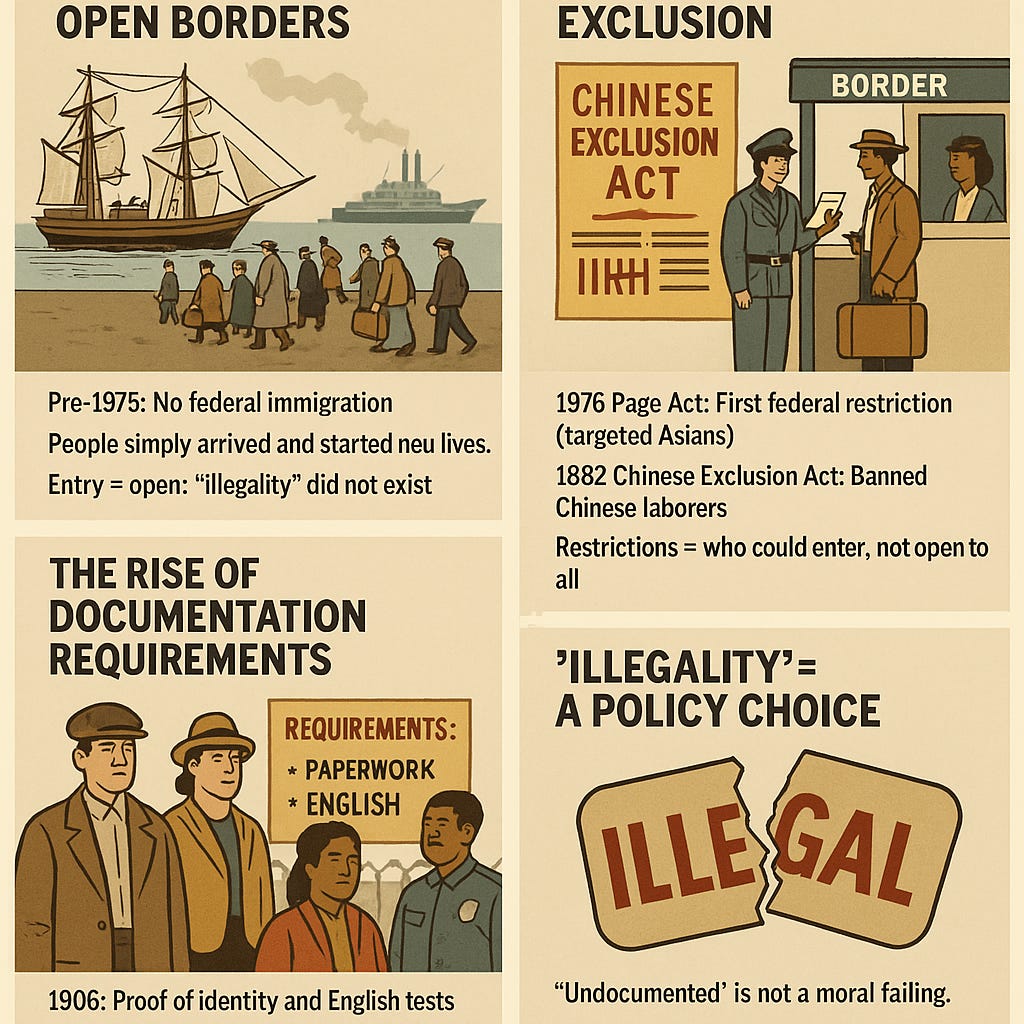When people today talk about “illegal immigrants,” they often treat the category as timeless. But the truth is, “illegality” is a modern invention.
For much of U.S. history, there were no federal restrictions on immigration. People simply arrived, seeking work or refuge, and began building their lives.
The Early Openness of America’s Borders
Pre-1875: The federal government did not restrict entry. States managed their own ports, but there was no overarching system of documentation for entry.
Who came? Millions of Europeans arrived without visas or papers, simply stepping off ships and becoming part of the American landscape.
Citizenship was largely limited to “free white persons” under the 1790 Naturalization Act, but entry itself was open.
Key Point: For white Europeans, “illegality” did not exist.
The Turn Toward Exclusion and Documentation
The shift came when the government began targeting who could enter:
1875 Page Act: First federal restriction, targeting Asian women under claims of preventing prostitution.
1882 Chinese Exclusion Act: Banned Chinese laborers, creating the first large-scale system of federal immigration enforcement.
Early 1900s: Literacy tests, head taxes, and medical inspections became barriers at Ellis Island and other ports.
1906 Naturalization Act: Required immigrants to learn English and register documentation to become citizens, tying identity to paperwork for the first time.
As the country industrialized and waves of Southern and Eastern European immigrants arrived, fears of “undesirable” populations drove policies that formalized border inspections, paperwork requirements, and deportations.
How Whiteness Shielded Many from Enforcement
Even as restrictions grew, immigration enforcement was uneven:
Western European immigrants, once in the U.S., blended into white society and were rarely targeted.
Asians, Mexicans, and others faced policing, exclusion, and violence under laws designed explicitly to keep them out or to limit their rights once inside.
The system was never neutral. It was designed to protect whiteness as the default American identity while restricting others.
“Undocumented” Status Is a Policy Choice
The modern concept of being “undocumented” is the result of:
Shifting quotas and caps (1924 Johnson-Reed Act, which severely restricted immigration from Asia and Eastern/Southern Europe).
Border Patrol establishment in 1924 to enforce the new restrictions.
Economic demands that brought workers in while denying them legal pathways.
People became “illegal” not because of who they were, but because laws changed beneath their feet, transforming neighbors, coworkers, and friends into targets for exclusion.
Why This Matters Now
Understanding this history exposes the myth that “illegality” is a moral failing. It is a construct used to control who belongs and to protect narrow definitions of American identity.
As we face a new wave of restrictionist policies under Project 2025, remembering that “illegality” is not inherent—but politically constructed—helps us see whose interests these narratives serve, and whose lives they endanger.
Next in This Series:
📖 Part III: The Demographic and Cultural Shift—Why America’s Diversity Is Here to Stay (and Why That Terrifies Some People)
Call to Action:
✏️ Share your family’s immigration story in the comments.
💬 What surprised you about this history?
📢 Share this with someone who thinks “illegal immigration” has always been a crime.






